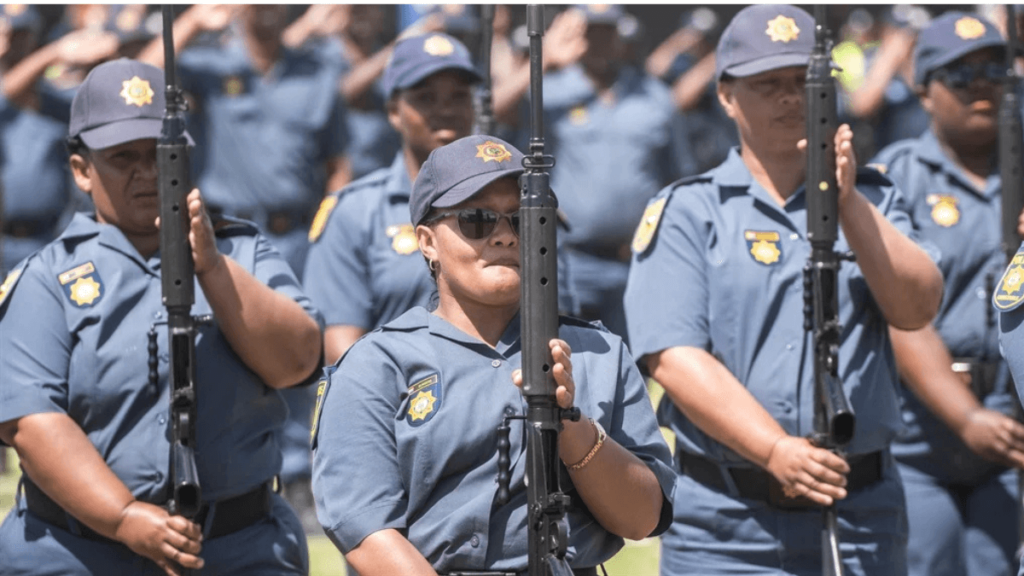The South African Police Service (SAPS) plays a crucial role in maintaining law and order, preventing crime, and protecting the citizens of South Africa. Like many law enforcement organisations around the world, SAPS operates with a structured rank system that defines authority, responsibility, and the chain of command.
Ranks Within SAPS: A Complete Guide
Understanding these ranks is important for those interested in a career in the police service or anyone seeking insight into how the organisation is structured.
Overview of the SAPS Rank System
The SAPS rank structure is divided into two main groups:
- Commissioned Officers – These are high-ranking officials who manage and lead large units and departments.
- Non-Commissioned Officers (NCOs) and Constables – These officers perform operational duties, investigations, and community policing.
Each rank comes with its own set of duties, responsibilities, and promotion requirements.
Non-Commissioned Officers and Constables
1. Constable
- Entry-level rank for police officers.
- Duties include basic law enforcement functions such as patrolling, responding to incidents, and traffic control.
- New recruits begin their careers at this level after completing police training.
2. Sergeant
- A promotion from constable based on experience and performance.
- Sergeants typically supervise constables, ensure procedures are followed, and assist in investigations.
3. Warrant Officer
- A senior operational rank.
- Warrant officers often lead teams in investigations, crime prevention operations, and provide training to junior officers.
Commissioned Officers
4. Lieutenant
- The first rank in the commissioned officer category.
- Responsible for managing shifts, overseeing investigations, and supporting station commanders.
5. Captain
- Captains manage sections of a police station, such as crime prevention units or detective branches.
- They play a supervisory role over lieutenants and warrant officers.
6. Major
- A middle-management rank.
- Majors coordinate operations, develop strategies, and ensure policy compliance.
7. Lieutenant Colonel
- Typically heads a police station or specialised unit.
- Responsible for performance management, community engagement, and resource allocation.
8. Colonel
- Manages multiple stations or departments within a region.
- Colonels also implement national directives and policies.
9. Brigadier
- Oversees a police cluster, which may consist of several stations.
- Coordinates large-scale operations and ensures integration of crime fighting efforts across areas.
Senior Management Ranks
10. Major General
- Commands a province or a large functional division (e.g., Crime Intelligence, Detectives).
- Sets strategic goals and ensures national policies are adhered to.
11. Lieutenant General
- A top-level executive role within SAPS.
- Oversees major departments such as Operational Services or Human Resource Management.
12. National Commissioner
- The highest rank in SAPS.
- Appointed by the President of South Africa.
- Responsible for the entire police service, reporting directly to the Minister of Police and Parliament.
Recommended for you: Key Skills for SAPS Members: What Makes a Good Police Officer?
Rank Insignia
SAPS officers wear insignia on their uniforms to indicate their rank. These include:
- Stars for lower ranks (e.g., one star for Lieutenant).
- Bars and laurel wreaths for middle ranks.
- National emblems for senior generals. This visual system helps identify the chain of command quickly and fosters discipline within the service.
Career Progression
Promotion within SAPS depends on factors like:
- Years of service
- Performance appraisals
- Training and qualifications
- Available vacancies
- Successful completion of promotional assessments
Also check: SAPS Salary Breakdown: From Constable to Commissioner – A Guide
Officers can also specialise in areas such as forensics, dog units, cybercrime, or public order policing, enhancing career opportunities.
The SAPS rank structure is essential for maintaining order, discipline, and operational efficiency within the police force. Each rank plays a specific role in ensuring public safety, from constables on the ground to generals crafting national strategies. Understanding this hierarchy not only gives insight into SAPS operations but also helps aspiring officers plan their career paths within law enforcement.






